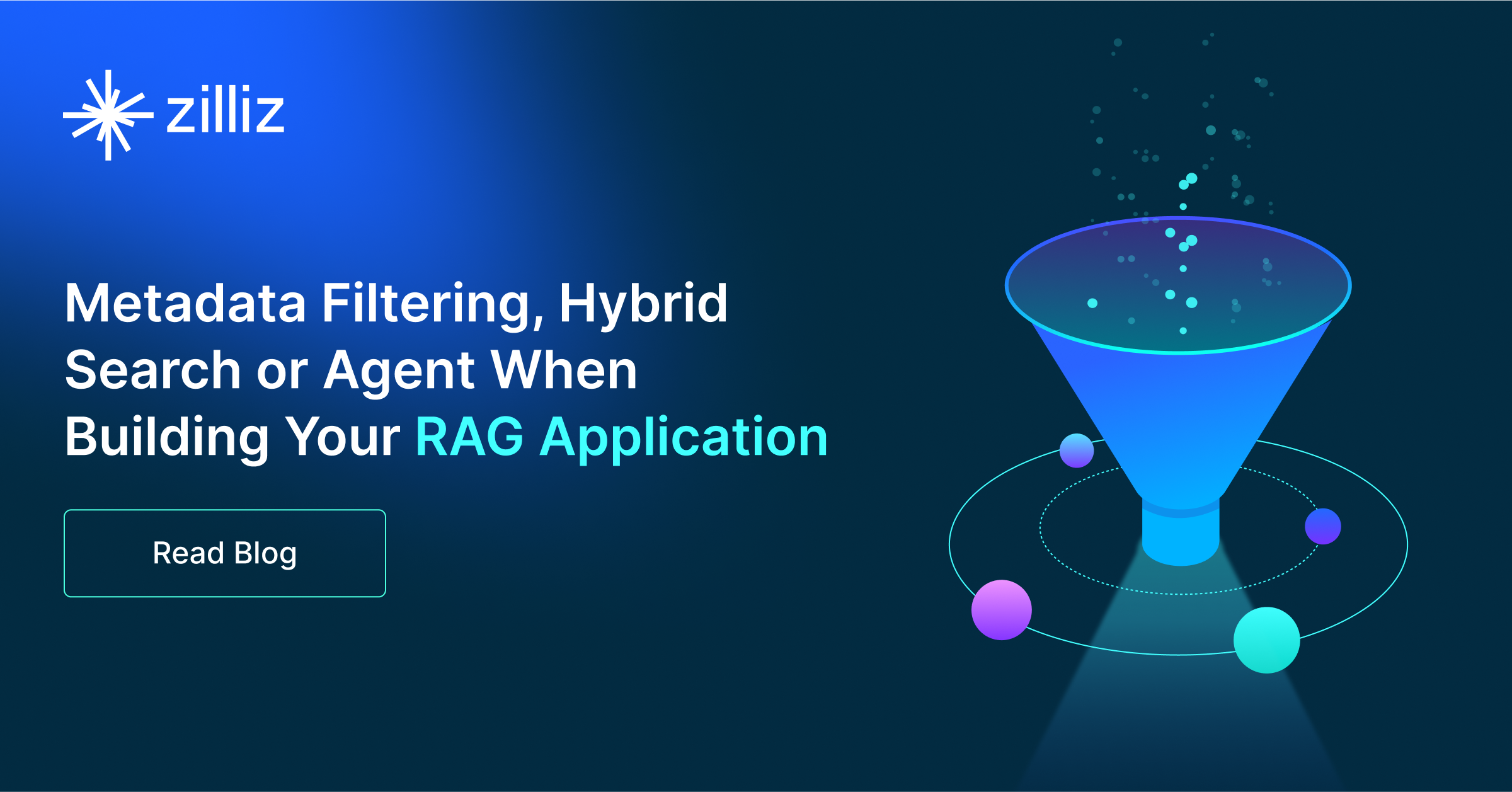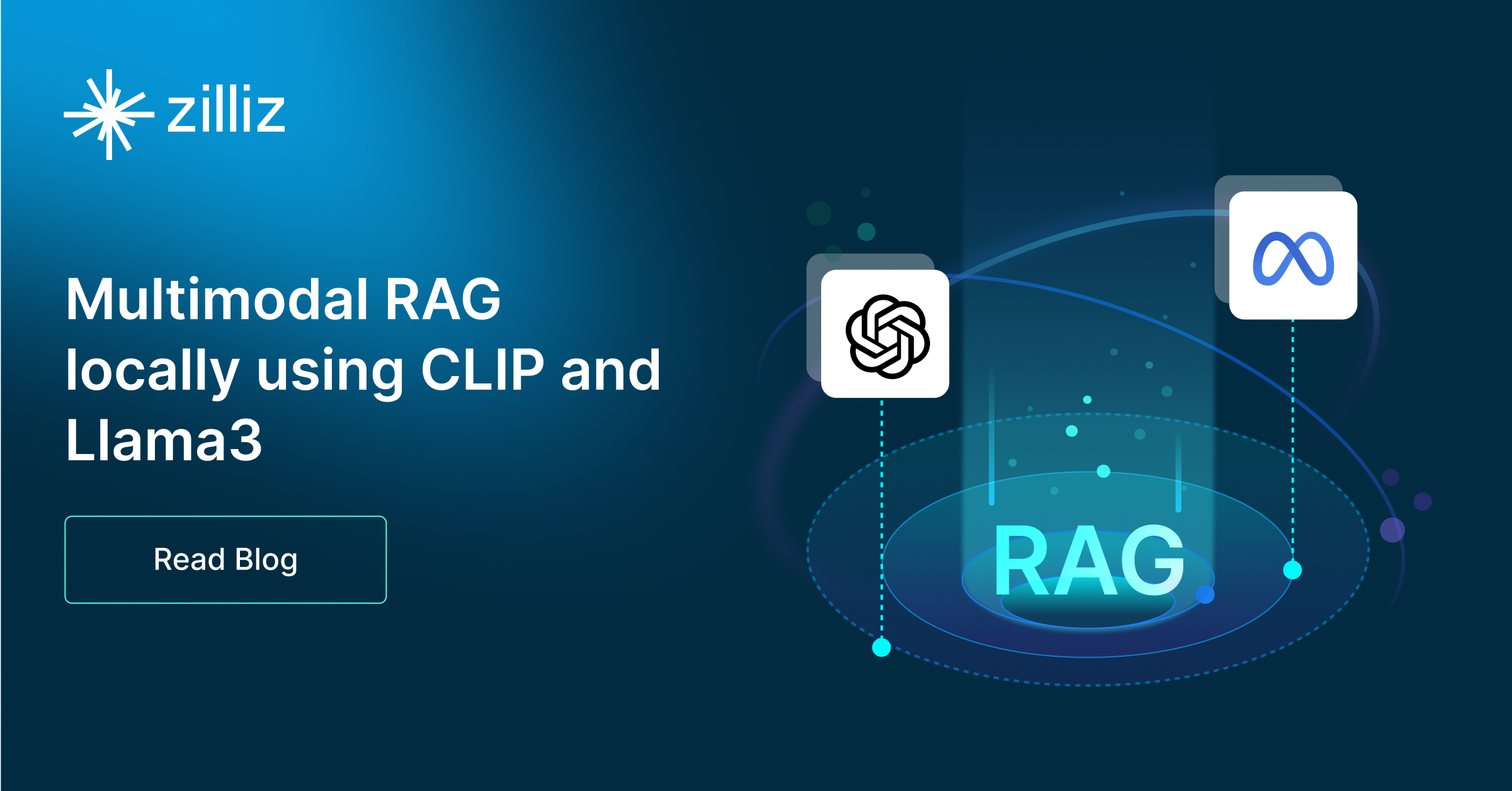Build RAG Chatbot with LangChain, LangChain vector store, Mistral AI Mistral Large, and voyage-3-lite
Introduction to RAG
Retrieval-Augmented Generation (RAG) is a game-changer for GenAI applications, especially in conversational AI. It combines the power of pre-trained large language models (LLMs) like OpenAI’s GPT with external knowledge sources stored in vector databases such as Milvus and Zilliz Cloud, allowing for more accurate, contextually relevant, and up-to-date response generation. A RAG pipeline usually consists of four basic components: a vector database, an embedding model, an LLM, and a framework.
Key Components We'll Use for This RAG Chatbot
This tutorial shows you how to build a simple RAG chatbot in Python using the following components:
- LangChain: An open-source framework that helps you orchestrate the interaction between LLMs, vector stores, embedding models, etc, making it easier to integrate a RAG pipeline.
- LangChain in-memory vector store: an in-memory, ephemeral vector store that stores embeddings in-memory and does an exact, linear search for the most similar embeddings. The default similarity metric is cosine similarity, but can be changed to any of the similarity metrics supported by ml-distance. It is intended for demos and does not yet support ids or deletion. (If you want a much more scalable solution for your apps or even enterprise projects, we recommend using Zilliz Cloud, which is a fully managed vector database service built on the open-source Milvusand offers a free tier supporting up to 1 million vectors.)
- Mistral AI Mistral Large: This model offers a high-performance solution for a range of natural language processing tasks. With a focus on large-scale text generation and comprehension, it excels in handling complex queries and generating nuanced responses. Ideal for applications in content creation, conversational agents, and research analysis, Mistral Large combines versatility with efficiency.
- Voyage-3-Lite: This model is designed for resource-constrained environments, offering a lightweight and efficient solution for various NLP tasks. It excels in applications such as chatbots, content generation, and real-time text analysis, providing quick responses while maintaining a balance between performance and computational efficiency. Ideal for developers needing high throughput with limited resources.
By the end of this tutorial, you’ll have a functional chatbot capable of answering questions based on a custom knowledge base.
Note: Since we may use proprietary models in our tutorials, make sure you have the required API key beforehand.
Step 1: Install and Set Up LangChain
%pip install --quiet --upgrade langchain-text-splitters langchain-community langgraph
Step 2: Install and Set Up Mistral AI Mistral Large
pip install -qU "langchain[mistralai]"
import getpass
import os
if not os.environ.get("MISTRAL_API_KEY"):
os.environ["MISTRAL_API_KEY"] = getpass.getpass("Enter API key for Mistral AI: ")
from langchain.chat_models import init_chat_model
llm = init_chat_model("mistral-large-latest", model_provider="mistralai")
Step 3: Install and Set Up voyage-3-lite
pip install -qU langchain-voyageai
import getpass
import os
if not os.environ.get("VOYAGE_API_KEY"):
os.environ["VOYAGE_API_KEY"] = getpass.getpass("Enter API key for Voyage AI: ")
from langchain-voyageai import VoyageAIEmbeddings
embeddings = VoyageAIEmbeddings(model="voyage-3-lite")
Step 4: Install and Set Up LangChain vector store
pip install -qU langchain-core
from langchain_core.vectorstores import InMemoryVectorStore
vector_store = InMemoryVectorStore(embeddings)
Step 5: Build a RAG Chatbot
Now that you’ve set up all components, let’s start to build a simple chatbot. We’ll use the Milvus introduction doc as a private knowledge base. You can replace it with your own dataset to customize your RAG chatbot.
import bs4
from langchain import hub
from langchain_community.document_loaders import WebBaseLoader
from langchain_core.documents import Document
from langchain_text_splitters import RecursiveCharacterTextSplitter
from langgraph.graph import START, StateGraph
from typing_extensions import List, TypedDict
# Load and chunk contents of the blog
loader = WebBaseLoader(
web_paths=("https://milvus.io/docs/overview.md",),
bs_kwargs=dict(
parse_only=bs4.SoupStrainer(
class_=("doc-style doc-post-content")
)
),
)
docs = loader.load()
text_splitter = RecursiveCharacterTextSplitter(chunk_size=1000, chunk_overlap=200)
all_splits = text_splitter.split_documents(docs)
# Index chunks
_ = vector_store.add_documents(documents=all_splits)
# Define prompt for question-answering
prompt = hub.pull("rlm/rag-prompt")
# Define state for application
class State(TypedDict):
question: str
context: List[Document]
answer: str
# Define application steps
def retrieve(state: State):
retrieved_docs = vector_store.similarity_search(state["question"])
return {"context": retrieved_docs}
def generate(state: State):
docs_content = "\n\n".join(doc.page_content for doc in state["context"])
messages = prompt.invoke({"question": state["question"], "context": docs_content})
response = llm.invoke(messages)
return {"answer": response.content}
# Compile application and test
graph_builder = StateGraph(State).add_sequence([retrieve, generate])
graph_builder.add_edge(START, "retrieve")
graph = graph_builder.compile()
Test the Chatbot
Yeah! You've built your own chatbot. Let's ask the chatbot a question.
response = graph.invoke({"question": "What data types does Milvus support?"})
print(response["answer"])
Example Output
Milvus supports various data types including sparse vectors, binary vectors, JSON, and arrays. Additionally, it handles common numerical and character types, making it versatile for different data modeling needs. This allows users to manage unstructured or multi-modal data efficiently.
Optimization Tips
As you build your RAG system, optimization is key to ensuring peak performance and efficiency. While setting up the components is an essential first step, fine-tuning each one will help you create a solution that works even better and scales seamlessly. In this section, we’ll share some practical tips for optimizing all these components, giving you the edge to build smarter, faster, and more responsive RAG applications.
LangChain optimization tips
To optimize LangChain, focus on minimizing redundant operations in your workflow by structuring your chains and agents efficiently. Use caching to avoid repeated computations, speeding up your system, and experiment with modular design to ensure that components like models or databases can be easily swapped out. This will provide both flexibility and efficiency, allowing you to quickly scale your system without unnecessary delays or complications.
LangChain in-memory vector store optimization tips
LangChain in-memory vector store is just an ephemeral vector store that stores embeddings in-memory and does an exact, linear search for the most similar embeddings. It has very limited features and is only intended for demos. If you plan to build a functional or even production-level solution, we recommend using Zilliz Cloud, which is a fully managed vector database service built on the open-source Milvus and offers a free tier supporting up to 1 million vectors.)
Mistral AI Mistral Large optimization tips
Mistral Large is a high-capacity model suitable for complex reasoning and in-depth retrieval tasks in RAG applications. To improve efficiency, use advanced reranking models to prioritize top-quality retrieval results, ensuring only the most relevant information is included in the context window. Optimize token efficiency by segmenting and structuring input prompts logically, avoiding excessive context that may slow down inference. Fine-tune temperature (0.1–0.2 for factual queries, up to 0.5 for creative reasoning) and sampling parameters to maintain response quality. Use dynamic retrieval strategies—retrieving broader context for ambiguous queries and narrowing the scope for well-defined questions. Deploy caching and asynchronous processing for handling high-throughput workloads efficiently. If running Mistral Large in a cloud environment, allocate resources dynamically to balance performance and cost.
voyage-3-lite optimization tips
voyage-3-lite is optimized for speed and efficiency, making it a strong choice for low-latency RAG applications. Improve retrieval by minimizing the number of retrieved documents while maintaining relevance using adaptive filtering techniques. Keep prompts concise and to the point, avoiding redundant context to reduce processing overhead. Set temperature between 0.1 and 0.2 to prioritize factual accuracy and prevent unnecessary response variation. Use caching to reduce repeated API calls for common queries. Implement response streaming to improve user experience in real-time applications. Optimize resource usage by running voyage-3-lite in high-throughput scenarios where speed is prioritized over deep reasoning, reserving larger models for more complex analysis.
By implementing these tips across your components, you'll be able to enhance the performance and functionality of your RAG system, ensuring it’s optimized for both speed and accuracy. Keep testing, iterating, and refining your setup to stay ahead in the ever-evolving world of AI development.
RAG Cost Calculator: A Free Tool to Calculate Your Cost in Seconds
Estimating the cost of a Retrieval-Augmented Generation (RAG) pipeline involves analyzing expenses across vector storage, compute resources, and API usage. Key cost drivers include vector database queries, embedding generation, and LLM inference.
RAG Cost Calculator is a free tool that quickly estimates the cost of building a RAG pipeline, including chunking, embedding, vector storage/search, and LLM generation. It also helps you identify cost-saving opportunities and achieve up to 10x cost reduction on vector databases with the serverless option.
 Calculate your RAG cost
Calculate your RAG cost
What Have You Learned?
What Have You Learned? Throughout this tutorial, you've embarked on a thrilling journey through the exciting world of Retrieval-Augmented Generation (RAG) systems, and you've gained invaluable insights along the way! We started by exploring how the LangChain framework elegantly connects all the components, making it a breeze to orchestrate complex tasks into a smooth, efficient workflow. You saw firsthand how a vector database can supercharge your application with lightning-fast searches, ensuring that you find the most relevant information in no time at all. Who wouldn't want that kind of speed at their fingertips?
Then, we dove into the power of the Mistral AI Large language model, a true champion of conversational intelligence, ready to engage users with contextually aware responses and delightful dialogues. Paired with an embedding model that generates rich semantic representations, you're now equipped to understand and manipulate data on a whole new level. Remember those optimization tips we featured? They can help you get the most out of your RAG system while keeping your resource usage efficient.
Now is your moment! With all these tools and knowledge at your disposal—plus that handy free cost calculator—you’re set up for success! So, don’t just sit there, ignite your creativity and start building, optimizing, and innovating your own RAG applications! The future of intelligent systems awaits, and it's filled with endless possibilities. Let’s get to coding and make magic happen!
Further Resources
🌟 In addition to this RAG tutorial, unleash your full potential with these incredible resources to level up your RAG skills.
- How to Build a Multimodal RAG | Documentation
- How to Enhance the Performance of Your RAG Pipeline
- Graph RAG with Milvus | Documentation
- How to Evaluate RAG Applications - Zilliz Learn
- Generative AI Resource Hub | Zilliz
We'd Love to Hear What You Think!
We’d love to hear your thoughts! 🌟 Leave your questions or comments below or join our vibrant Milvus Discord community to share your experiences, ask questions, or connect with thousands of AI enthusiasts. Your journey matters to us!
If you like this tutorial, show your support by giving our Milvus GitHub repo a star ⭐—it means the world to us and inspires us to keep creating! 💖
- Introduction to RAG
- Key Components We'll Use for This RAG Chatbot
- Step 1: Install and Set Up LangChain
- Step 2: Install and Set Up Mistral AI Mistral Large
- Step 3: Install and Set Up voyage-3-lite
- Step 4: Install and Set Up LangChain vector store
- Step 5: Build a RAG Chatbot
- Optimization Tips
- RAG Cost Calculator: A Free Tool to Calculate Your Cost in Seconds
- What Have You Learned?
- Further Resources
- We'd Love to Hear What You Think!
Content
Vector Database at Scale
Zilliz Cloud is a fully-managed vector database built for scale, perfect for your RAG apps.
Try Zilliz Cloud for Free


